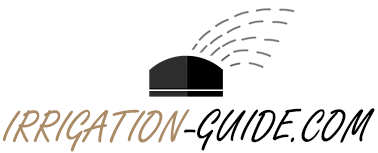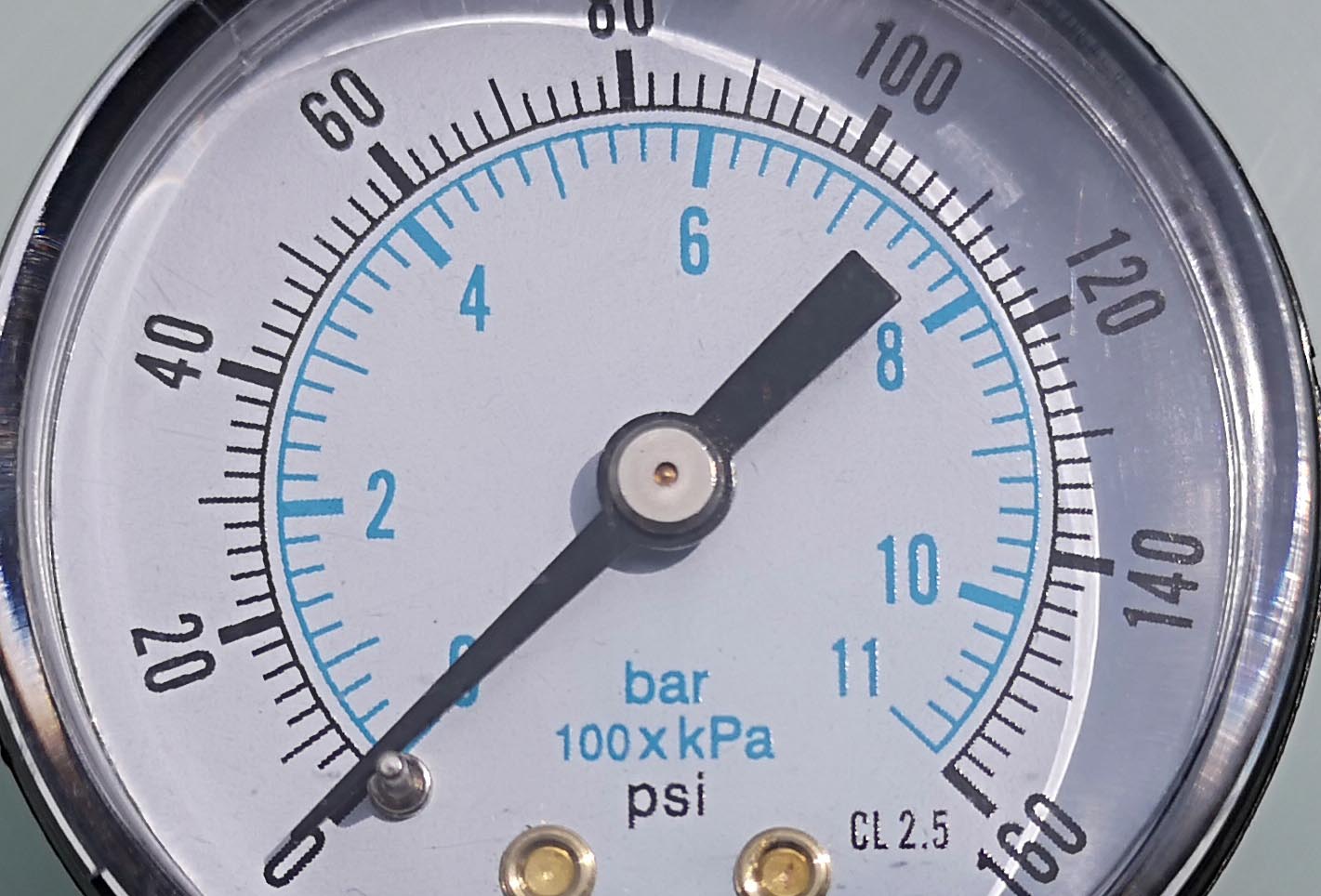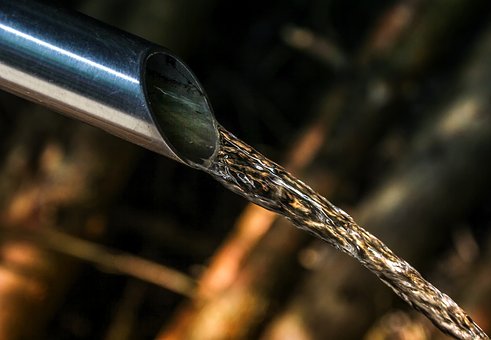In order to ensure that the garden can be irrigated with the available water source, not only the amount of water that can be drawn from the water source per hour is relevant, one also needs to know the available water pressure.
In order to measure the correct one, a little theory is necessary: In principle, one can distinguish between three different types of water pressure when using the water from a tap:
- The water pressure with which the house is connected to the public water network
- The water pressure at which the water comes out of the outside tap
- The water pressure in the irrigation pipeline
The counterparts when using a garden pump are the following 3:
- The maximum delivery pressure of the garden pump used
- The water pressure at which the water comes out of the pump
- The water pressure in the irrigation pipeline
The pressure is highest in the first stage and then decreases from stage to stage. The pressure that is ultimately relevant for irrigation is always the last. This pressure is used to derive the amount of water available in the irrigation system and the range of the sprinklers.
Water pressure in the public water network or delivery pressure of the garden pump
Let me just give you some information about water pressure of the first type, i.e. the one with which the house is connected to the public water network. The easiest way to find out this is by looking at the manometer installed at the connection point. If you do not have access to the connection point or if there is no manometer installed, you can also inquire about the water pressure from the responsible water supplier.
The delivery pressure of a water pump can be found in the operating instructions for the pump or on the pump itself or can be found out by researching the Internet.
The water pressure immediately after being connected to the public water network is greater than that at the tap, as the pressure decreases due to the pipe runs that the water must go through in the house before it comes to the water connection for irrigation. The same applies to pumping with a water pump: With this, the specified maximum delivery pressure is that which the pump would create if it didn’t have to pump up the water. Since the water is usually pumped from the depths, the water pressure decreases due to the height difference to be overcome (14.5 psi pressure loss per 3.3 feet of depth).
Measurement of the water pressure at the tap or at the pump outlet
The measurement of the pressure at the tap or pump outlet is suitable to get an impression of whether the water source is in principle suitable for the implementation of irrigation. For this purpose, water pressure gauges are offered on the Internet, which cost from around 10 to 15 USD.
Below is an excerpt from the range of such water pressure gauges on Amazon:
CARBO Instruments 2-1/2" Water Pressure Test Gauge, 0-200 PSI, Red Max Pointer, 3/4" Female Hose Thread, Rust-Free Corrosion-Resistant Case, Brass Connector, for Home, Garden, RV, Indoor/Outdoor
$9.95 (as of 9. October 2025 10:32 GMT +02:00 - More infoProduct prices and availability are accurate as of the date/time indicated and are subject to change. Any price and availability information displayed on [relevant Amazon Site(s), as applicable] at the time of purchase will apply to the purchase of this product.)MEASUREMAN 0-200 PSI Water Pressure Gauge, 2-1/2'' Dial, Hose bib Pressure Gauge, Home Water Pressure Tester, Durable 3/4” Hose Thread, Water Pressure Gauge for Home
SENCTRL 0-100 Psi Glycerin Liquid Filled Low Pressure Gauge, 2.5" Dial Size, 1/4" NPT Lower Mount, Stainless Steel Case, for Water Pump, Pneumatic Air, Well, RV Hose, Tank, Gas Pressure Test
$9.99 (as of 9. October 2025 06:34 GMT +02:00 - More infoProduct prices and availability are accurate as of the date/time indicated and are subject to change. Any price and availability information displayed on [relevant Amazon Site(s), as applicable] at the time of purchase will apply to the purchase of this product.)The function of the water pressure gauge is very simple:
When measuring on a tap:
Step 1: Screw the water pressure gauge onto the tap
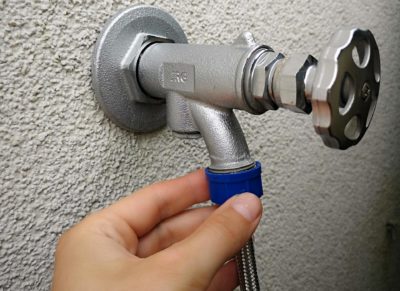
The pressure gauge is usually supplied with a small adapter, with which you can reduce a 3/4 inch thread to a 1/2 inch thread if necessary – depending on the outlet of the tap.
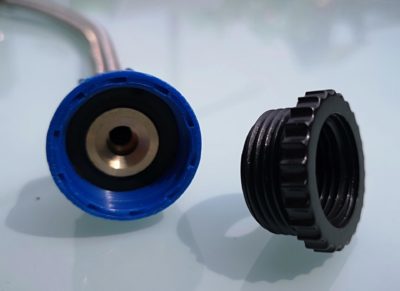
Intermediate piece from 3/4 inch to 1/2 inch
Step 2: Turn the tap on fully
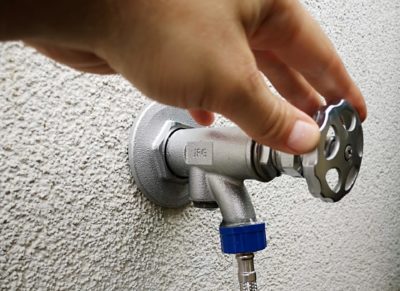
Then wait a little to rule out short-term fluctuations. No consumer in the house, such as a washing machine or similar, should be active during the measurement.
Step 3: Read the psi value from the manometer and note it down
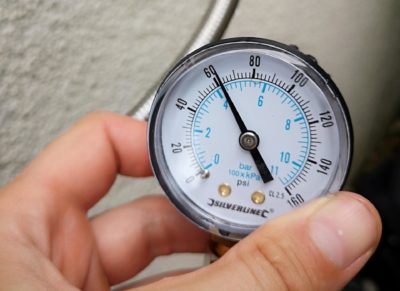
Often a bar value is also given on the pressure gauge, which is not relevant for our purpose. This is the usual pressure unit in Europe, 14.5 psi corresponds to 1 bar.
When measuring on a garden pump:
Process exactly as before, only that the pressure gauge has to be screwed onto the pump outlet. Most pumps have an outlet with an internal thread of 1 inch. However, the pressure gauge requires a 3/4 inch external thread. So you also need a suitable connector. Then simply screw on the pressure gauge and carry out the test as described above. Note: Switch off the pump immediately after reading it! Since no water flows through the pump during the measurement, there is no cooling and the pump could become hot when running for a long time.
Measurement of the water pressure in the irrigation pipeline
This would now determine the pressure at the water source, which, together with the measurement of the amount of water, gives an initial indication of how potent the water source is. For the planning of an irrigation system, however, the pressure that is actually available in the pipeline is relevant. This is smaller because it is slowed down by the resistance in the pipeline pipes running through it. See the article Calculating the pressure loss in the pipeline.
And subsequently, the question of how the available pressure in the pipeline is used is relevant: which part of the pressure acts on the side walls of the pipeline pipe and is therefore available to the sprinklers and which part drives the water forward and thus provides a larger amount of water (flow pressure). The two variables are inversely proportional to one another, the greater the pressure on the pipe walls, the lower the flow pressure and vice versa. This interaction and how the appropriate pressure on the pipeline for the irrigation system and the resulting amount of water can be determined can be read in the blog post Determine water flow at certain water pressure.
